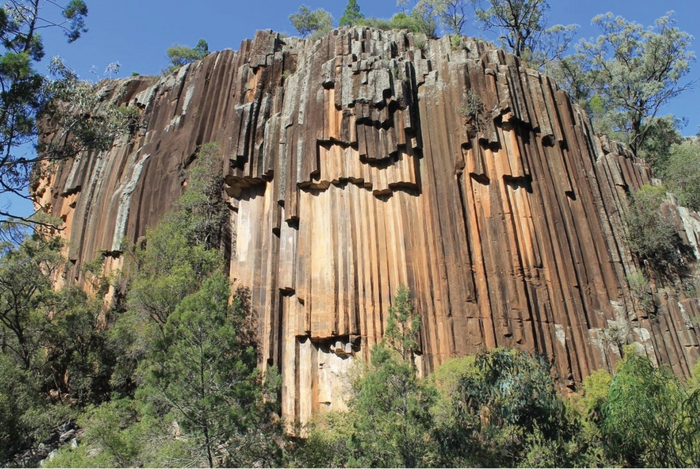Volcanic relics scattered throughout the Australian landscape are a map of the northward movement of the continent over a ‘hotspot’ inside the Earth, during the last 35 million years.

Credit: Dr Tracey Crossingham
Volcanic relics scattered throughout the Australian landscape are a map of the northward movement of the continent over a ‘hotspot’ inside the Earth, during the last 35 million years.
University of Queensland researchers Dr Tamini Tapu, Associate Professor Teresa Ubide and Professor Paulo Vasconcelos discovered how these relics reveal the inner structure of the Australian volcanoes became increasingly complex as the hotspot’s magma output decreased.
Dr Al-Tamini Tapu, whose PhD project at UQ’s School of Earth and Environmental Sciences formed the basis of this study, said the hotspot was incredibly strong in its early stages, generating some of eastern Australia’s most beloved natural attractions.
“These large volcanoes were active for up to seven million years,” Dr Tapu said.
“The volcanoes formed as the continent moved over a stationary hotspot inside the planet, melting the land above it so magma could ooze upward.
“This left a treasure trove of volcanic landmarks in its wake, forming the longest chain of continental ‘hotspot’ volcanoes on Earth –along Australia’s eastern side.
“As you cast your eye along this massive chain, you’ll find Queensland volcanoes such as the Glass House Mountains and Tweed Volcano, which are ‘shield volcanoes’ visited by countless locals and tourists every year.”
Enormous, long-lived lava outpourings in Tweed volcano may have weakened the hotspot, and caused the younger volcanoes to the south to become smaller and shorter-lived.
“This indicates the changes caused as the continent shifted over the weakening hotspot,” Dr Tapu said.
Associate Professor Teresa Ubide said that, as the magma production waned, the volcanoes became internally more complicated, erupting lavas full of complex crystals.
“These little heroes hold the secrets of how the volcano works inside and tell us that the late Australian volcanoes were full of magma pockets, or reservoirs,” Dr Ubide said.
“As these cooled down and became more viscous, it became more difficult to generate eruptions, which may have been more explosive.
“We found that the arrival of new, hotter, and gas-rich magma acts like a shaken bottle of fizzy drink, causing a build-up of pressure in the magma, and, eventually, an eruption.”
Dr Ubide said Australia’s extinct ‘hotspot volcanoes’ provide a unique laboratory for researchers to investigate processes leading to volcanic eruptions across the globe.
“The effect of erosion over tens of millions of years allows us to access complete sequences of lava that can be difficult to access in more recent volcanoes,” she said.
“It then makes it possible to reconstruct the inner structure of the volcanoes, sort of like opening a doll’s house, which gives us a much better understanding of hotspot activity globally.
“This is particularly important, given there are many active hotspots on Earth, including in the Pacific and Atlantic oceans, and in other continents, such as the United States’ Yellowstone volcano.
“Volcanoes in these areas produce large volumes of lava and have an important role in the evolution of our planet and atmosphere – so having a real-world ‘doll’s house’ to play around in and observe variations with time and magma supply is very helpful.
“Our study shows the fundamental role of the strength of heat anomalies inside the Earth in the evolution of our planet and its landscape over millions of years.
“Reconstruction of these extinct volcanoes can help to better understand active continental hotspot volcanoes globally.”
This research is published in Nature Geoscience.
Journal
Nature Geoscience
DOI
10.1038/s41561-023-01156-9
Method of Research
Observational study
Article Title
Increasing complexity in magmatic architecture of volcanoes along a waning hotspot
Article Publication Date
23-Mar-2023




